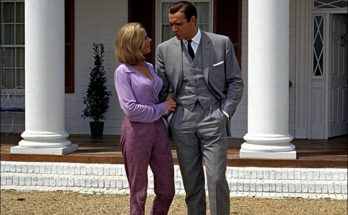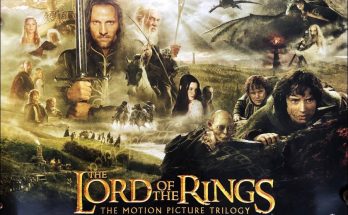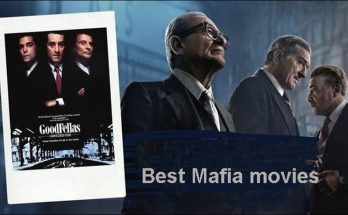Arbitrage director Nicholas Jarecki always wanted the world of the film to feel real, devoid of typical movie convention and false notes. Because of his intricate knowledge and research, he has crafted a film that tries to show in an entertaining and easy to understand way how the world of finance and its key players really do work.
One of the most challenging aspects of the filmmaking was creating a billionaire’s world with a low budget. “We had to document that New York and it’s expensive!” says Jarecki. He wanted the real places that these people go to so the audience could get a real sense of the world these characters live in.
“It was very important for Nick to shoot this film in New York and that could have been a challenge,” Salerno explains. “However, his friends opened a lot of doors, and we were very fortunate to get access to places that we normally wouldn’t have been able to otherwise. They add another layer to the reality of what we are seeing. We see the glamour in the Dassault jets, the banquet halls and tuxedos, but we also end up seeing the sadness underneath. I think it’s one of the most realistic portrayals of this world I’ve seen on screen.”
Jarecki’s contacts gave them access to such prestigious New York landmarks as The Four Seasons, The Plaza Hotel and the GM Building on Fifth Avenue that serves as Miller’s trading empire, probably one of the most prestigious offices in Manhattan. “I didn’t think we would ever get The Four Seasons or the GM building — I thought we’d be in a banquet hall in Long Island, but it’s another testament to our director who wouldn’t compromise on any level so we ended up shooting in some of the most beautiful and iconic locations in Manhattan,” adds Turen.
Additionally, Jarecki’s neighbor in New York turned out to be a Judge so she arranged for them to shoot in the Grand Jury room in the criminal courts in Manhattan at 100 Center Street which no film had every shot in (and where the next day Dominique Strauss Kahn received his indictment!). Location manager Damon Gordon, also managed to secure full access to the Triborough Bridge, which had never been shot before.
“After everything had collapsed for what seemed like the 19th time, it was finally happening for real, and the night before the shoot, Kevin Turen said to me — ‘no compromises, no gimmicks.’ That became our mantra. We brought that commitment and enthusiasm and we found it in like-minded, passionate New Yorkers who supported us.”
Jarecki surrounded himself with an incredibly strong team in costume, design and cinematography. Together they were able to make the world he wanted to create very real as well as bring a high level of beauty to it. “I wanted a very modern, contemporary look for the film, teeming with wealth — the end of the gilded age, which Beth (Production Designer) created,” says Jarecki. “We had extensive meetings because I knew the locations intimately. I’m a big fan of design and Christian Liaigre was my reference point for what we should see. Everything had to be dripping with luxury and authenticity was the key.”
For a first-time director, the role of the cinematographer is always critical. “One of the most important people on this film is Yorick Le Saux, our Director of Photography,” beams Bickford. Before hiring Le Saux, Jarecki met with 35 cinematographers over the course of a year when he was trying to envision the picture. Towards the end, Turen, Jarecki and Bickford watched the five-hour mini series Carlos, on DVD. “We were actually looking at a few minutes of it to evaluate an actor’s work. Ten minutes in we yelled out, ‘Who’s this DoP?! Let’s get him!'”
“We were blown away by the style of it,” recalls Bickford. After watching I am Love and Julia, Jarecki and Bickford flew to London, and Le Saux took the train from Paris to meet them at their hotel. “It was a quick coffee and somehow we knew at the end of it that we were old friends — kindred spirits. And I felt I could learn everything from him. He was clearly the guy.” Once Le Saux was on board, they spent a month planning the look of the film.
“Yorick is a master craftsman and artist. I was so lucky he came on board,” says Jarecki. “We shot this film pretty quickly and with over 60 locations, we were moving all the time. But I knew we needed a classic feel to the film. So without enough resources or time — how do we get that? And the answer is Yorick Le Saux. Right from the beginning he said we would make a plan and then we would throw it all out to maintain spontaneity in the moment and the chance of happy accidents. And after a month of storyboarding and shot listing, that’s exactly what we did,” he laughs.
Arbitrage was filmed on 35mm and they spent weeks in postproduction tweaking the colors to get the picture as beautiful possible, “to paint a strange, fused portrait of our ‘golden New York,’ a bit of a chaotic mess — much like Robert Miller himself,” explains Jarecki. Cliff Martinez who recently scored Drive and Contagion wrote a haunting score which provided the film’s final dimension. Notes Jarecki, “Cliff’s score further unlocks the emotional heart of the film while driving it forward with an unrelenting tension and intrigue. New York as he hears it is a scary place, but filled with moments of love and life.”
Related Link: View the Full Production Notes for Arbitrage
Visits: 51



